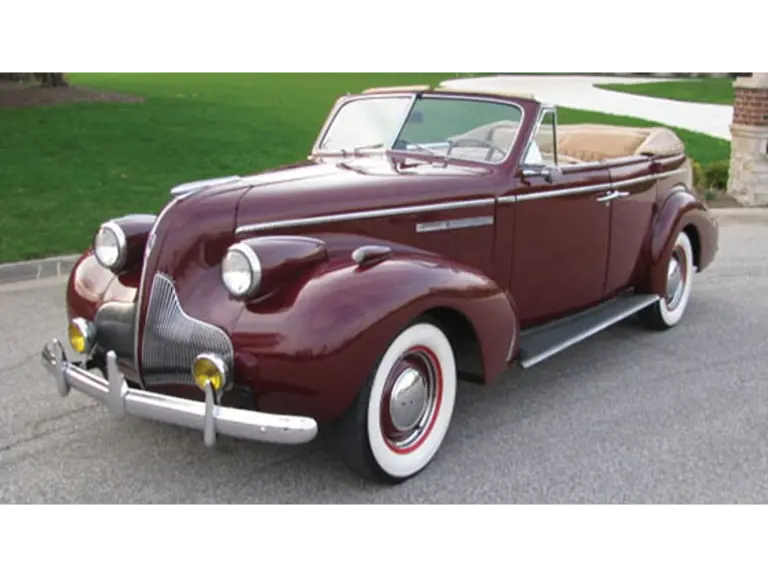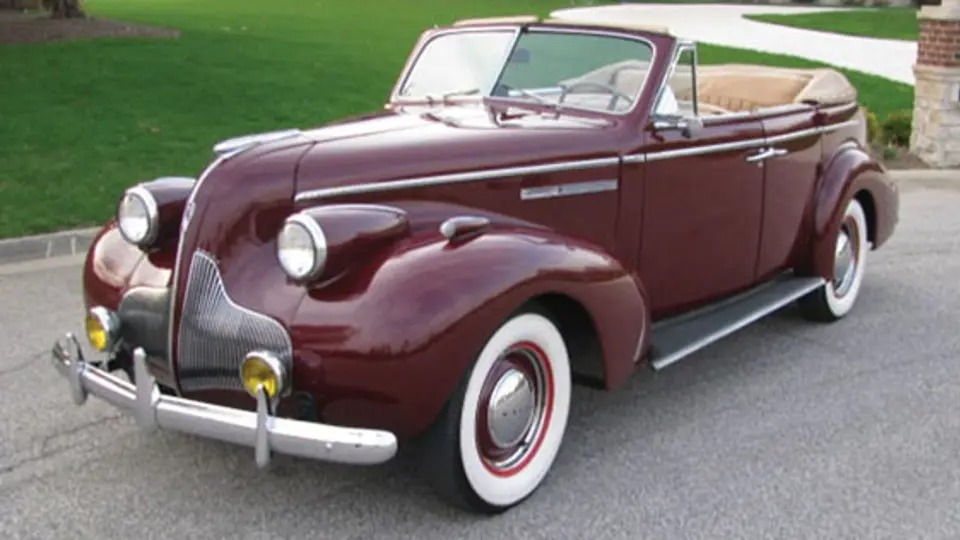Even in 1939 Buick engineers aimed for better aerodynamics without a total redesign process. They used smart styling with eminent good sense in the planning of the 1939 models. Buick’s styling for 1939 was highlighted by a new, two-piece “waterfall” grille. The new grille was complemented by a narrower hood, thinner front door panels and larger hubcaps. The 1939 Buicks are considered by many automotive and design historians to be one of the benchmark vehicles of the late Art Deco period.
The Buick Series 40 cars were also known as the Special and this car represents the (by far) lowest production body style of the Special line. Between the six different body designs of the Special line there were a total of 166,349 cars produced. The Series 41C Sport Phaeton, like this offering, was built for just 724 fortunate clients; quite uncommon by the most stringent of standards. It is readily identified by its distinctive trunk back design; five passengers can be comfortably transported.
The Sport Phaeton is powered by Buick’s strong and smooth running Dynaflash 248-cid, 107-hp inline eight-cylinder engine which is connected to a three-speed manual transmission. Looking regal in burgundy with a tan interior and tan cloth soft-top with a glass rear window; the chrome and brightwork are also beautifully presented making for an impressive visual package. In 1939 Buick offered the standard running boards (such as seen on this car), but they were taking a first step to eventual purging these essentials by offering “streamboards,” which ran the same length as the traditional fittings, but were much narrower. Dual sideview mirrors, color-keyed steel wheels, wide whitewall tires, factory hubcaps and trim rings are also featured on this attractive platform.
This is a great car to take out on the road and experience its comfort, convenience and spaciousness in a package that exudes good taste.



 | Auburn, Indiana
| Auburn, Indiana


